The Story of the Malakand Field Force by Winston S. Churchill (guided reading books txt) 📕
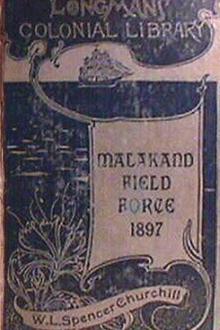
- Author: Winston S. Churchill
- Performer: -
Book online «The Story of the Malakand Field Force by Winston S. Churchill (guided reading books txt) 📕». Author Winston S. Churchill
Here we leave the Malakand Field Force. It may be that there is yet another chapter of its history which remains to be written, and that the fine regiments of which it is composed will, under their trusted commander, have other opportunities of playing the great game of war. If that be so, the reader shall decide whether the account shall prolong the tale I have told, or whether the task shall fall to another hand.
[It is an excellent instance of the capricious and haphazard manner in which honours and rewards are bestowed in the army, that the operations in the Mamund Valley and throughout Bajaur are commemorated by no distinctive clasp. The losses sustained by the Brigade were indisputably most severe. The result was successful. The conduct of the troops has been officially commended. Yet the soldiers who were engaged in all the rough fighting I have described in the last eight chapters have been excluded from any of the special clasps which have been struck. They share the general clasp with every man who crossed the frontier and with some thousands who never saw a shot fired.]
” … And thou hast talk’d
Of sallies and retires, of trenches, tents, Of palisadoes, frontiers, parapets, Of basilisks, of cannon, culverin.”
“Henry IV.,” Part I., Act ii., Sc.3.
It may at first seem that a chapter wholly devoted to military considerations is inappropriate to a book which, if it is to enjoy any measure of success, must be read by many unconnected with the army. But I remember that in these days it is necessary for every one, who means to be well informed, to have a superficial knowledge of every one else’s business. Encouraged also by what Mr. Gladstone has called “the growing militarism of the times,” I hope that, avoiding technicalities, it may be of some general interest to glance for a moment at the frontier war from a purely professional point of view. My observations must be taken as applying to the theatre of the war I have described, but I do not doubt that many of them will be applicable to the whole frontier.
The first and most important consideration is transport. Nobody who has not seen for himself can realise what a great matter this is. I well recall my amazement, when watching a camel convoy more than a mile and a half long, escorted by half a battalion of infantry. I was informed that it contained only two days’ supplies for one brigade. People talk lightly of moving columns hither and thither, as if they were mobile groups of men, who had only to march about the country and fight the enemy wherever found, and very few understand that an army is a ponderous mass which drags painfully after it a long chain of advanced depots, stages, rest camps, and communications, by which it is securely fastened to a stationary base. In these valleys, where wheeled traffic is impossible, the difficulties and cost of moving supplies are enormous; and as none, or very few, are to be obtained within the country, the consideration is paramount. Mule transport is for many reasons superior to camel transport. The mule moves faster and can traverse more difficult ground. He is also more hardy and keeps in better condition. When Sir Bindon Blood began his advance against the Mohmands he equipped his 2nd Brigade entirely with mules. It was thus far more mobile, and was available for any rapid movement that might become necessary. To mix the two—camels and mules—appears to combine the disadvantages of both, and destroy the superiority of either.
I have already described the Indian service camp and the “sniping”
without which no night across the frontier could be complete. I shall therefore only notice two points, which were previously omitted, as they looked suspiciously technical. As the night firing is sometimes varied by more serious attacks, and even actual assaults and sword rushes, it is thought advisable to have the ditch of the entrenchment towards the enemy. Modern weapons notwithstanding, the ultimate appeal is to the bayonet, and the advantage of being on the higher ground is then considerable.
When a battery forms part of the line round a camp, infantry soldiers should be placed between the guns. Artillery officers do not like this; but, though they are very good fellows, there are some things in which it is not well to give way to them. Every one is prone to over-estimate the power of his arm.
In the Mamund Valley all the fighting occurred in capturing villages, which lay in rocky and broken ground in the hollows of the mountains, and were defended by a swarm of active riflemen. Against the quickly moving figures of the enemy it proved almost useless to fire volleys.
The tribesmen would dart from rock to rock, exposing themselves only for an instant, and before the attention of a section could be directed to them and the rifles aimed, the chance and the target would have vanished together. Better results were obtained by picking out good shots and giving them permission to fire when they saw their opportunity, without waiting for the word of command. But speaking generally, infantry should push on to the attack with the bayonet without wasting much time in firing, which can only result in their being delayed under the fire of a well-posted enemy.
After the capture and destruction of the village, the troops had always to return to camp, and a retirement became necessary. The difficulty of executing such an operation in the face of an active and numerous enemy, armed with modern rifles, was great. I had the opportunity of witnessing six of these retirements from the rear companies. Five were fortunate and one was disastrous, but all were attended with loss, and as experienced officers have informed me, with danger. As long as no one is hit everything is successful, but as soon as a few men are wounded, the difficulties begin. No sooner has a point been left—a knoll, a patch of corn, some rocks, or any other incident of ground—than it is seized by the enemy. With their excellent rifles, they kill or wound two or three of the retiring company, whose somewhat close formation makes them a good mark. Now, in civilised war these wounded would be left on the ground, and matters arranged next day by parley. But on the frontier, where no quarter is asked or given, to carry away the wounded is a sacred duty. It is also the strenuous endeavour of every regiment to carry away their dead. The vile and horrid mutilations which the tribesmen inflict on all bodies that fall into their hands, and the insults to which they expose them, add, to unphilosophic minds, another terror to death. Now, it takes at least four men, and very often more, to carry away a body. Observe the result. Every man hit, means five rifles withdrawn from the firing line. Ten men hit, puts a company out of action, as far as fighting power is concerned. The watchful enemy press. The groups of men bearing the injured are excellent targets.
Presently the rearguard is encumbered with wounded. Then a vigorous charge with swords is pushed home. Thus, a disaster occurs.
Watching the progress of events, sometimes from one regiment, sometimes from another, I observed several ways by which these difficulties could be avoided. The Guides, long skilled in frontier war, were the most valuable instructors. As the enemy seize every point as soon as it is left, all retirements should be masked by leaving two or three men behind from each company. These keep up a brisk fire, and after the whole company have taken up a new position, or have nearly done so, they run back and join them. Besides this, the fire of one company in retiring should always be arranged to cover another, and at no moment in a withdrawal should the firing ever cease. The covering company should be actually in position before the rear company begins to move, and should open fire at once. I was particularly struck on 18th September by the retirement of the Guides Infantry. These principles were carried out with such skill and thoroughness that, though the enemy pressed severely, only one man was wounded. The way in which Major Campbell, the commanding officer, availed himself of the advantages of retiring down two spurs and bringing a cross fire to bear to cover the alternate retirements, resembled some intricate chess problem, rather than a military evolution.
The power of the new Lee-Metford rifle with the new Dum-Dum bullet—it is now called, though not officially, the “ek-dum” [Hindustani for “at once.”] bullet—is tremendous. The soldiers who have used it have the utmost confidence in their weapon. Up to 500 yards there is no difficulty about judging the range, as it shoots quite straight, or, technically speaking, has a flat trajectory. This is of the greatest value. Of the bullet it may be said, that its stopping power is all that could be desired. The Dum-Dum bullet, though not explosive, is expansive. The original Lee-Metford bullet was a pellet of lead covered by a nickel case with an opening at the base. In the improved bullet this outer case has been drawn backward, making the hole in the base a little smaller and leaving the lead at the tip exposed. The result is a wonderful and from the technical point of view a beautiful machine. On striking a bone this causes the bullet to “set up” or spread out, and it then tears and splinters everything before it, causing wounds which in the body must be generally mortal and in any limb necessitate amputation. Continental critics have asked whether such a bullet is not a violation of the Geneva or St. Petersburg Conventions; but no clause of these international agreements forbids expansive bullets, and the only provision on the subject is that shells less than a certain size shall not be employed. I would observe that bullets are primarily intended to kill, and that these bullets do their duty most effectually, without causing any more pain to those struck by them, than the ordinary lead variety. As the enemy obtained some Lee-Metford rifles and Dum-Dum ammunition during the progress of the fighting, information on this latter point is forthcoming. The sensation is described as similar to that produced by any bullet—a violent numbing blow, followed by a sense of injury and weakness, but little actual pain at the time. Indeed, now-a-days, very few people are so unfortunate as to suffer much pain from wounds, except during the period of recovery. A man is hit. In a quarter of an hour, that is to say, before the shock has passed away and the pain begins, he is usually at the dressing station. Here he is given morphia injections, which reduce all sensations to a uniform dullness. In this state he remains until he is placed under chloroform and operated on.
The necessity for having the officers in the same dress as the men, was apparent to all who watched the operations. The conspicuous figure which a British officer in his helmet presented in contrast to the native soldiers in their turbans, drew a well-aimed fire in his

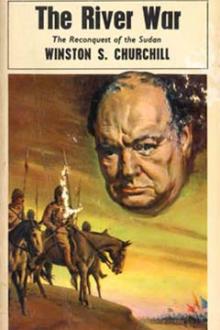
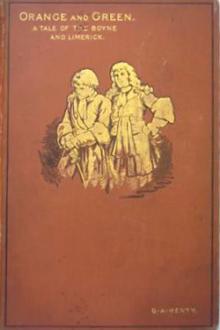
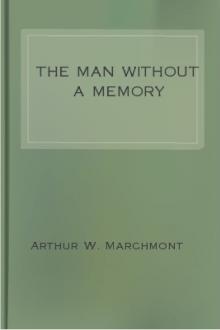
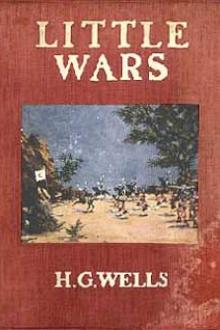
Comments (0)